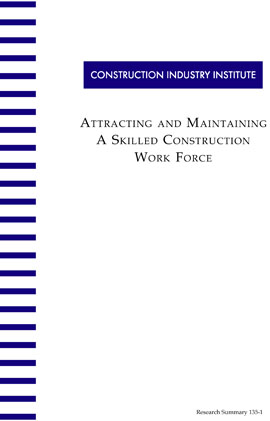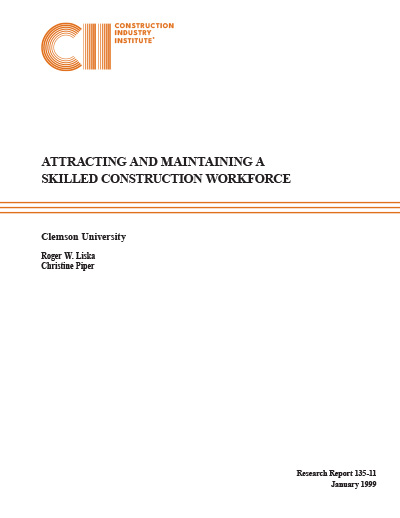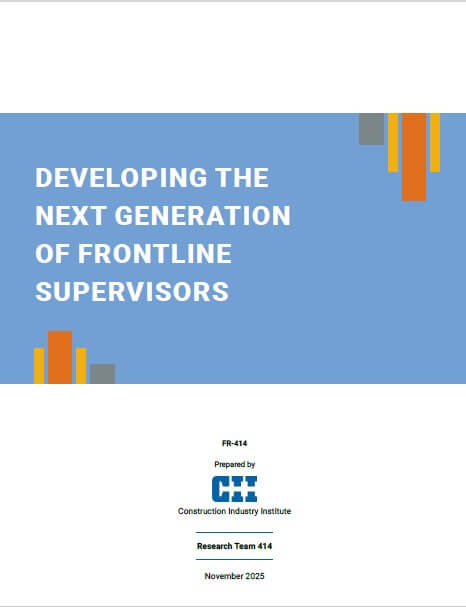
Attracting and Maintaining a Skilled Construction Work Force
Perhaps the greatest challenge facing the construction industry over the next decade will be attracting and retaining qualified workers. In many parts of the country, companies are already grappling with this issue. Qualified workers no longer simply show up at a project’s doorstep. Skill levels continue to decline and workers threaten to leave for a dollar more in wages elsewhere. While owners squeeze contractors for lower cost and faster schedules, contractors reduce their training costs and hope that someone else will train craft workers for future projects. Both owners and contractors must address the attraction and retention issues.
A new way of thinking will be required to attract and retain craft workers. As stewards of their projects and their company’s financial success, project managers are always faced with the challenge of lowering projects costs to improve returns. Cutting craft wages is not the answer and can actually drive costs higher. Those contractors and owner companies who are willing to focus on finding quality craft workers and innovate ways to compensate them will be the successful companies of the future.
The CII Attract/Maintain Skilled Work Force Research Team has identified several techniques that can assist owners and contractors in addressing these issues. Using these techniques will save the industry money and provide a better environment for workers.
Union workers felt safety was more important than benefits. Benefits were more important to the older workers. Craft workers leave the industry for the following reasons (in order of importance): (RS135-1, p. 9)
- Poor pay and benefits
- Need for a permanent job
- Poor safety
- Poor treatment
- Poor working conditions
While contractors use improved job safety to attract and retain employees, the workers themselves felt that safety, or lack of it, is one of the main reasons they leave.
RS135-1, Activities to Attract and Retain Construction Craft Workers
Examples of key activities to attact employees include: (RS135-1, Appendix A, p. 16)- Recruit at trade schools, high schools, and community colleges
- Pursue reduction in force (RIF) employees to keep them working
- Work with other contractors for hiring
- Recruit outside of project locations
- Have formal written tests and performance tests as a mechanism to hire qualified workers
- Conduct a needs assessment to train workers on a continuous basis
- Conduct supervisory human relations training
- Tie documented wage progression to skills
- Give long-term preferential treatment to tenured employees
- Inform employees of project progression
- Emphasize the community side of construction
RS135-1, Contractor Field Personnel Pre-Qualification Checklist
This checklist is to be used to pre-qualify construction contracctors for stffing of projects. The objective is for owner companies to pre-qualify contractors on their abiity to retain craft workers on projects. (RS135-1, Appendix B, p. 21)
- ROR for the last few projects
- Journeymen certification and craft level assessment process
- Activities employed in attraction and retention programs
- Craft training programs for the specific project and history of training programs
- Benefit programs for crafts
- Wage survey data and basis
- Craft worker career development process



